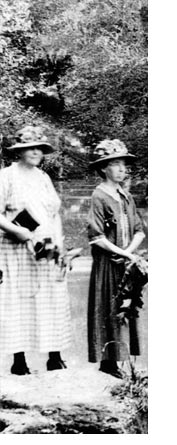 |
Heritage
Park History
In early 1917,
the United States entered the First World War,
and the War Department leased 7,600 acres of
forest land on Buffalo Bayou about five miles
west of what was then Houston to locate a training
base named Camp Logan. More than 25,000 soldiers
trained at the facility.
In 1923, when
the camp hospital closed and the camp was deserted,
Catherine Mary Emmott wrote to the Houston Chronicle
suggesting that “the city buy some of the
land and turn it into a park in memory of the
boys.” In late 1923 and early 1924, Will
and Mike Hogg, with minority owner Henry Stude,
bought two tracts of former Camp Logan land,
and then rather than develop it into a subdivision
similar to River Oaks, sold the 1,503 acres
to the city at cost. In May 1924, the city of
Houston officially took title to the land and
established Houston’s Memorial Park in
memory of the soldiers who had trained there.
Soon after
the city took possession of the land, nationally
acclaimed landscape architects Hare & Hare
of Kansas City, Missouri were hired to sketch
out a plan for the park. Initial plans called
for an 18-hole golf course, scenic drives, trails
for hikers and “nature students,”
bridle paths, and an amphitheater. Beautification
was simply to involve existing vegetation. One
newspaper reporter wrote, “Memorial Park...
is to be kept in the wild state, almost entirely,
and made a sanctuary for birds, small game,
wild flowers, holly, and whatever else needs
protection against man....These are the present
plans for Memorial Park. It is up to the vigilance
of the nature lovers of Houston in years to
come to keep them so and prevent the civilizing
of that park.”
In 1942, it
was announced that Mr. and Mrs. H.C. Wiess had
given the city 8.84 acres of land on the west
side of Memorial Park. The mayor at the time,
Neal Pickett, felt that it should be added to
the park, and the park boundaries were extended
to include the Wiess tract.
|